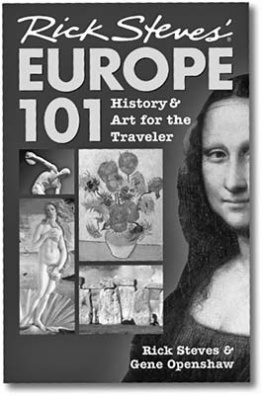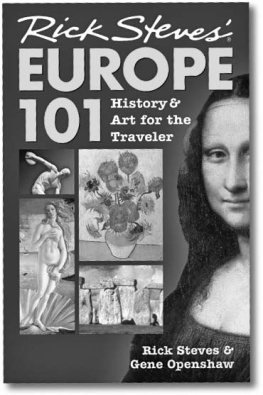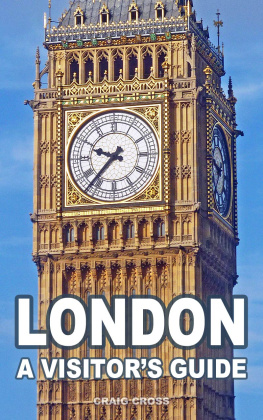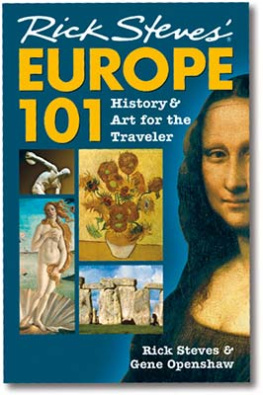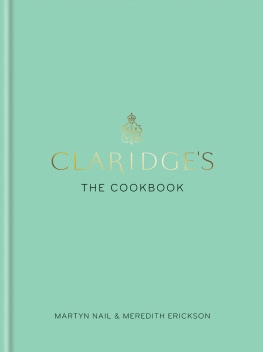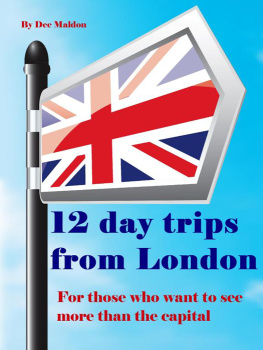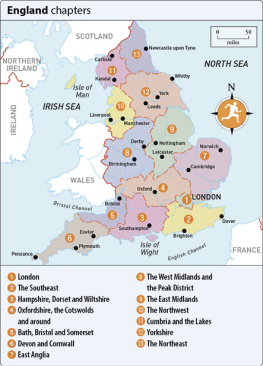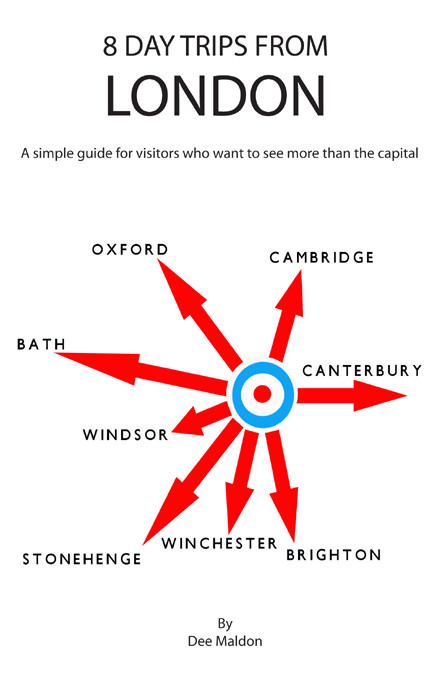Introduction
Why take any day trips from London? After all London has so much to see and do. Who could ever be bored there?
But escaping London is not about being bored. Its about seeing the quieter parts of England, experiencing a different type of history and seeing the countryside and smaller towns of this most interesting land. Many visitors are often surprised to discover that London wasnt always the nations capital.
And getting out of the city is easy to do. The UK, despite what many British people might tell you, has a fairly good public transport system both by bus or train. As a result, all the journeys in this book can be made after breakfast and you can be back in your hotel room and tucked up in bed by night time.
But train and bus schedules do change. As a result, weve resisted including any timings here. However we have included website addresses for the most up-to-date information.
Train travel is frequently cheaper after 10am but check that any cheap ticket does not restrict your return journey to after 6 pm or later. Please buy a ticket before you board the train, ticket inspectors are not the most sympathetic of creatures. Tickets can be bought from sales desks and machines around most stations.
Coach travel is often, although not always, cheaper than train. We tend to use the term bus to refer to travel inside a city. A coach refers to buses that travel between towns. Most coaches from London leave from Victoria Coach Station, not far from the Victoria train and tube stations.
Please note that this is not an in-depth guide. Instead, we hope to provide information on where you can go from London in a day, how to get there and a brief taste of what each place might offer. Longer trips out of London require more extensive, and expensive, guide books.
There are no maps in this book which keeps it all reasonably priced. Instead we expect you to print out Google maps in advance or use the maps that most of us can access in our phones.
So have fun with your explorations.
Bath
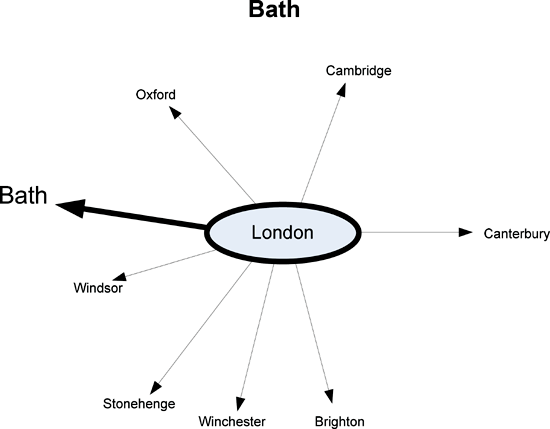
Distance from London: 100 miles or 160 kilometres
Brief History
Mineral hot springs have made the area attractive to people since prehistoric times. The ancient Celts worshipped the Goddess Sulis at the springs, and King Bladud, father of King Lear, is said to have cured himself of leprosy here by rolling around in the mud where the hot springs bubbled to the surface.
The Romans built a fort here in AD 60, Aqua Sulis, and dedicated it to the Roman Goddess Minerva. As the Roman settlement grew, the springs were plumbed to create public baths with plunge pools, drainage, heated rooms, beautiful terraces and temples.
The area has a strong connection with King Arthur who fought against the Saxons to keep the Celtic tribes free from being over-run and over-ruled. Eventually the Saxons did make a successful invasion, and Bath grew in such importance that Saxon kings were crowned here. Large monasteries accrued wealth, and the city had to have large fortifications to protect its riches from Viking invasions.
The site grew further in medieval times as a market centre for the wool and cloth trade.
The town became truly fashionable in the 18th century when a wealthy city benefactor sought to improve the city. Ralph Allen was post master who achieved prominence by developing a new system for delivering mail. He wanted Bath to be beautiful. Two architects, a father and son team known as John Woods, the elder and younger, gave Bath its wide spacious streets that offered a sharp contrast to the overcrowded lanes in London. Local quarries of Bath stone were used to create the beautifully curved buildings with their perfect symmetry and proportions. The style was copied from a 16th century Venetian architect, Andrea Palladio, hence the style now known as Palladian architecture.
Their work brought the city a refined air, which duly attracted a refined populace. The citys Master of Ceremonies at this time was Richard Nash, better known as Beau. He was an Oxford University drop-out, a gambler and a dandy. But he knew how to attract stylish people to the city. Many rented rooms, floors and even whole houses so they could spend the social season here. Bath became a place to see and be seen. As a result, Bath is the setting for many of Jane Austens wealthier characters.
Today Bath is a World Heritage Site and one of the most beautiful cities in England with Roman, Georgian, Victorian and modern attractions.
How to get there
Train
From London Paddington Station, trains run approximately every 30 minutes and the journey takes 1 hour and 40 minutes.
Visit www.thetrainline.com
Train info. tel: 08457 48 49 50
Bus
The coach journey takes more than 3 hours in each direction.
For information visit
www.nationalexpress.com
Places to See
Roman Baths
Many of the Roman works had been lost to the city until the 1720s when sewers were being dug and workers uncovered a huge bronze head of the Goddess Minerva. Archaeological work since then has revealed the full workings of the Roman baths. The spring, temple and bath complex can be viewed and, despite its 2000 year age, it is remarkably well preserved with reservoir, drainage and treatment pools. The baths contain the only mineral hot spring in England
http://www.romanbaths.co.uk
Admission includes free audio tours in several languages.
If you are planning to visit the Fashion Museum then you can combine tickets and save money.
Fashion Museum
Clothing here comes from the 17th century through to the designers of today. Audio guides are available. In addition, study facilities and teaching sessions may be booked. Check the website for details.
The museum can be found at the Assembly Rooms, Bennett Street.
http://www.fashionmuseum.co.uk/
Bath Abbey
Construction began in the 15th century, but it was built over an older Norman church. You can climb to the top of the Abbey tower for a wonderful view over Bath (you must pay for access)
The Pump Room
This 18th century building sits to the south side of the Abbey churchyard. The spring waters were said to have health benefits, and The Pump Room was the place to visit for Georgians who wanted to enjoy the benefits. A fountain here still provides drinking water from the mineral springs 50p a cup. A restaurant offers traditional food and often a musical trio provides entertainment.
Pulteney Bridge and weir
This is one of only four bridges in the world with shops bordering both sides. Tourist boats leave from here in decent weather.
Crossing the bridge will take you to Great Pulteney Street. The Georgian architecture here has made it the perfect backdrop for period films, including Vanity Fair with Reese Witherspoon.
Jane Austen Centre
Celebrates everything about Jane Austen and her books, with guides, costumes, tea room and gift shop.
http://www.janeausten.co.uk/
American Museum
This is only museum of Americana outside the USA. The aim is to improve Anglo-American understanding, and the display of maps, furniture, quilts and other ephemera certainly does that. The museum is set in a 19th century manor house. A taxi from the train station to the museum takes about 15 minutes.


